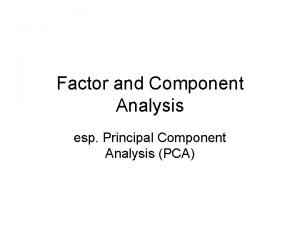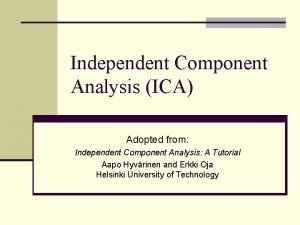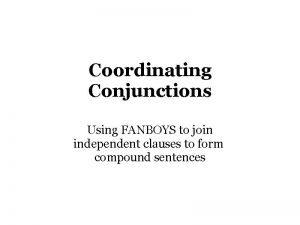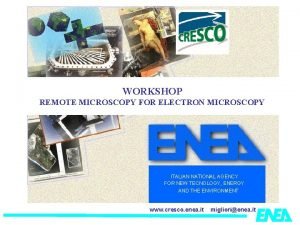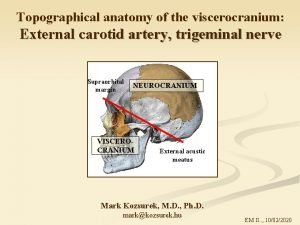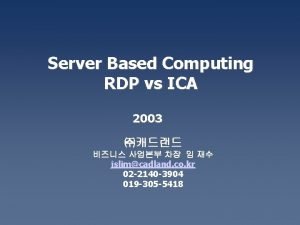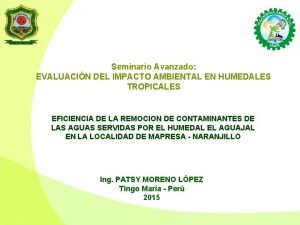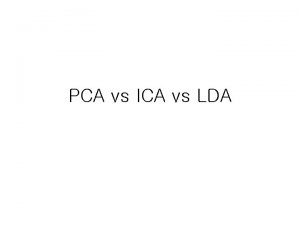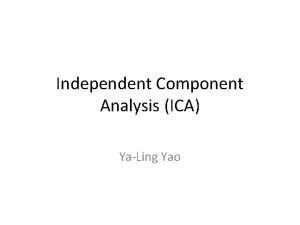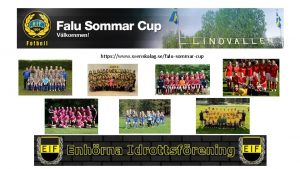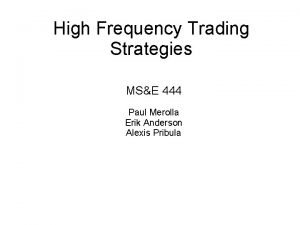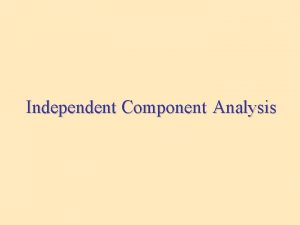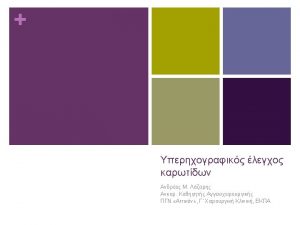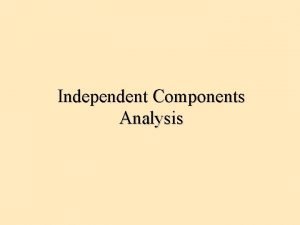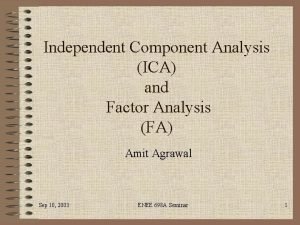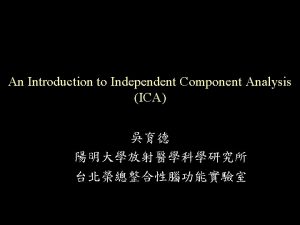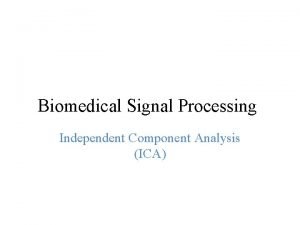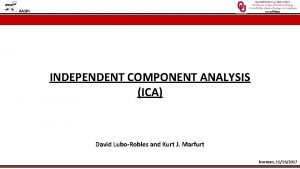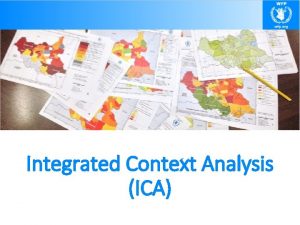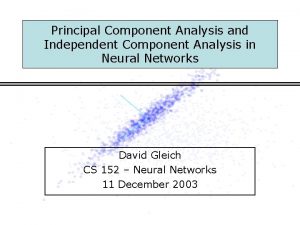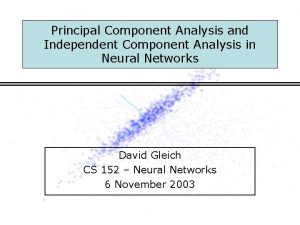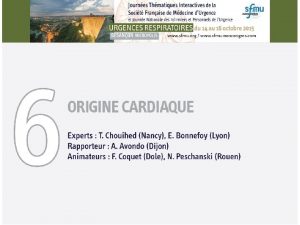DataDriven Approaches Independent Component Analysis ICA Hypothesis vs
















- Slides: 16

Data-Driven Approaches Independent Component Analysis (ICA)

Hypothesis- vs. Data-Driven Approaches Hypothesis-driven Examples: t-tests, correlations, general linear model (GLM) • a priori model of activation is suggested • data is checked to see how closely it matches components of the model • most commonly used approach Data-driven Example: Independent Component Analysis (ICA) • blindly separates a set of statistically independent signals from a set of mixed signals • no prior hypotheses are necessary

ICA example Thanks to Matt Hutchison for providing this great example!

Math behind the method Thanks to Matt Hutchison for providing this great example!

Applying ICA to f. MRI data 1 threshold 7 Threshold = temporal correlation between each voxel and the associated component Strength of relationship Signal change (%) Magnitude = Time (s) Thanks to Matt Hutchison for providing this great example!

Pulling Out Components Huettel, Song & Mc. Carthy, 2008

Components Huettel, Song & Mc. Carthy, 2008 • each component has a spatial and temporal profile

Sample Output

Default Mode Network (DMN) LP PCC m. PFC LTC • • decreases activity when task demand increases self-reflective thought unconstrained, spontaneous cognition stimulus-independent thoughts (daydreaming) (Raichle et al. , 2007)

ICA doesn’t know positive vs. negative

Why ICA? • Data exploration – time courses that are hard to model • e. g. , seizures, hallucinations – understanding artifacts • Data denoising – identify noise components and subtract or model them out to enhance stats for cleaned vs. uncleaned data • Network Identification – especially for resting state data • e. g. , find network that matches a default mode network template • Comparisons of networks between groups

Making Sense of Components • how many components? – too many • splitting of components • hard to dig through – too few • clumping of components – 20 -40 recommended – some algorithms can estimate # components • how do you make sense of them? – visual inspection – sorting – fingerprints

Sorting Components • variance accounted for by component • spatial correlation with known areas – regions of interest (e. g. , fusiform face area) – networks of interest (e. g. , default mode network) • temporal correlation with known events – task predictors

Brain Voyager Fingerprints • fingerprint = multidimensional polar plot characterization of the properties of an ICA component A good BV fingerprint looks like a slightly tilted Mercedes icon real activation should be clustered real activation should have power in medium temporal frequencies real activation should show temporal autocorrelation De. Martino et al. , 2007, Neuro. Image

Expert Classification “activation” motion artifacts susceptibility artifacts vessels spatially distributed noise De. Martino et al. , 2007, Neuro. Image temporal high freq noise

Fingerprint Recognition • train algorithm to characterize fingerprints on one data set; test algorithm on another data set De. Martino et al. , 2007, Neuro. Image
 Datadriven marketing
Datadriven marketing Independent component analysis vs pca
Independent component analysis vs pca Cocktail party problem demo
Cocktail party problem demo Hypothesis of the study example
Hypothesis of the study example Developing null and alternative hypothesis
Developing null and alternative hypothesis Alternativehypothesis
Alternativehypothesis Protoplanet hypothesis weakness
Protoplanet hypothesis weakness Fanboys connectors
Fanboys connectors Sism9
Sism9 Infraorbital artery
Infraorbital artery Rdpsign
Rdpsign Indice ica
Indice ica Pca vs lda
Pca vs lda Pca vs ica
Pca vs ica Ica hörnan enhörna
Ica hörnan enhörna Streaming xxnx
Streaming xxnx Hotel de turistas ica
Hotel de turistas ica

